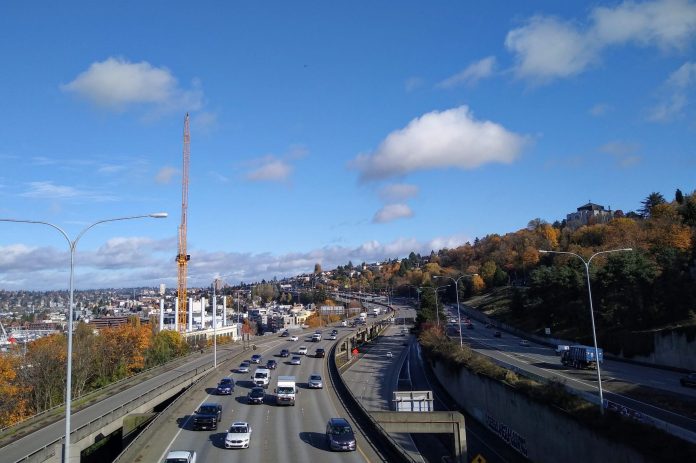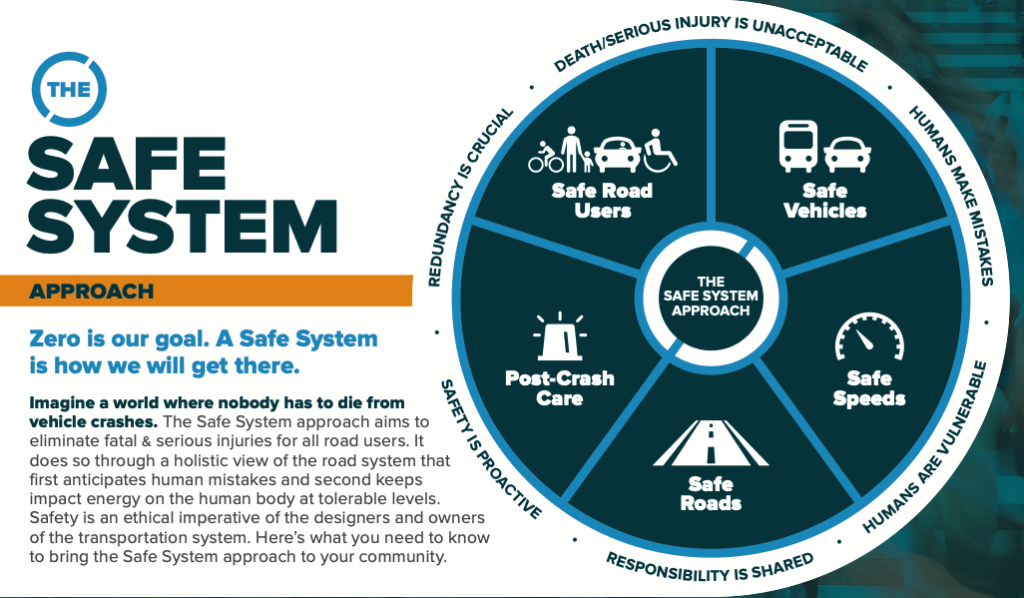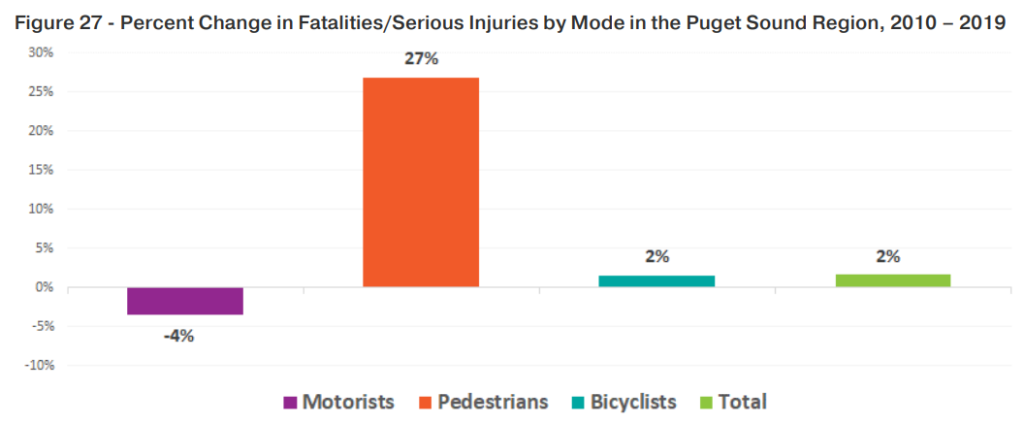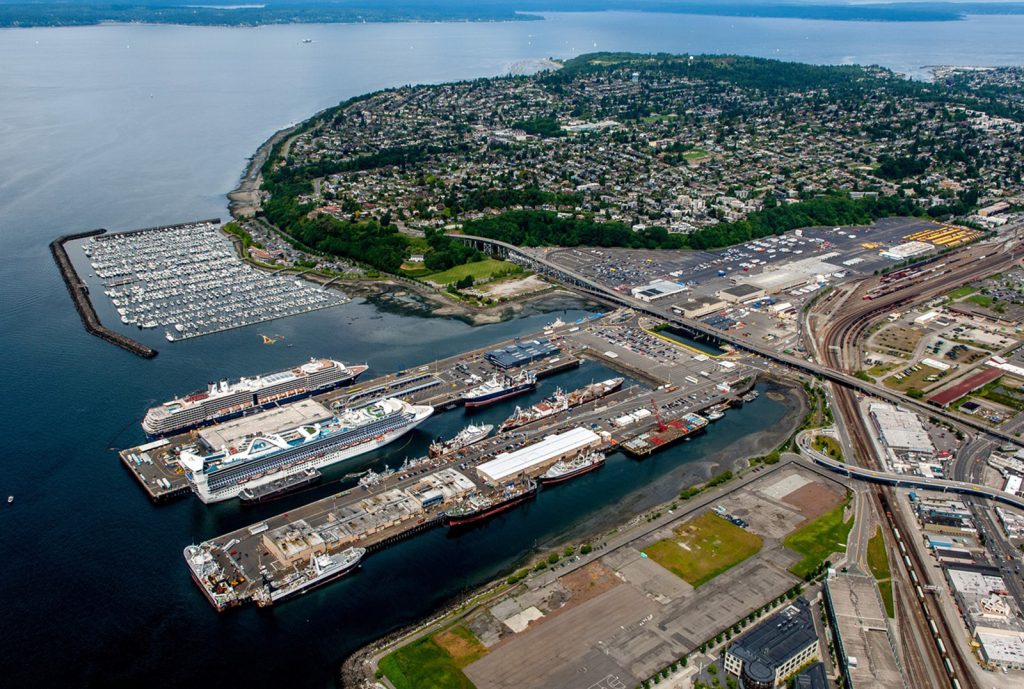
When the fourth draft of the Regional Transportation Plan (RTP) was released to the public by the Puget Sound Regional Council (PRSC) in early January, none of the elected leaders from the region comprises that body had read it yet. The draft’s contents had been shaped through conversations happening at PSRC’s Transportation Policy Board and elsewhere for more than a year; however, because the RTP was not shared in advance with elected leaders, any changes they want to make to the 193-page plan (with 10 appendices) must happen between now and May, when it needs to be adopted. This has created a situation in which local leaders are tasked with incorporating feedback submitted during public comment at the same time as they try to ensure the plan aligns with their own priorities.
Over the next several weeks, tweaks to the RTP will get debated, and many proposed changes adding stronger language to the draft plan in several key areas will likely make the cut. Many of these amendment proposals echo comments made by PSRC members like current President Claudia Balducci around climate work and safety, but it remains to be seen how many will be able to gain traction with a majority of the membership, which is made up of elected leaders from all corners of the region.
Climate
On the issue of climate, the draft RTP makes a number of assumptions around the impact of changes to the region’s transportation and land use policies (via a previously approved VISION 2050 plan) on the overall reduction of transportation-related emissions by 2050. The plan assumes an 83% reduction compared to 1990 levels will largely happen through increased fuel efficiency standards and increased electrification of transportation. Last year, electric vehicles accounted for just 1.6% of the passenger vehicles on Washington’s roadways. The chart below illustrates the small, but pivotal, part that the RTP and VISION 2050 will play in achieving those goals. But if vehicle electrification happens more slowly than predicted — or if the policies identified in the RTP itself are less effective than planned — the emissions reduction goal won’t be met.

Several officials are pushing for the climate strategy in the plan to do more. Balducci, who is also King County Council President, is pushing for the agency to develop a climate implementation strategy after it adopts the RTP.
“The Climate Implementation Strategy will evaluate the region’s likelihood of achieving both its 2030 and 2050 greenhouse gas transportation related reduction goals, as well as the steps that must be taken, particularly in the next several years, to achieve the 2030 greenhouse gas transportation reduction goal. Assumptions and targets for technology, state-level funding, mode share, and regional vehicle-miles-traveled (VMT) reduction goals (in addition to per capita VMT targets) should also be included. The Climate Implementation Strategy will also develop metrics to track the region’s progress toward the 2030 and 2050 goals,” Balducci’s proposed amendment reads.
Pushing to more closely examine an interim 2030 target is a theme among suggested edits by elected leaders. Rep. Emily Wicks (D-Everett) is also requesting a strategic plan to look at what it will take to hit our emissions targets by that year, and a collective group of officials from Pierce County, including Tacoma Mayor Victoria Woodards, Tacoma Councilmember Kristina Walker, and three members of the Pierce County Council, are asking for a “mechanism for monitoring progress towards achievement of both the 2030 and 2050 goals and mechanisms for adapting if progress towards these goals does not occur at the rate set forth in the RTP.” Those officials are also asking for PSRC to consider hiring an environmental justice specialist to look at how overburdened communities might be impacted by any planned actions.
If the RTP is adopted without the language proposed by these leaders, the climate assumptions in it could run on autopilot until the next update to the plan four years from now, losing valuable time.
Transportation Safety
Safety is a frequent theme in the RTP, mentioned in the draft 139 times. But many leaders are pushing for the language on the issue to be strengthened. Currently the plan references the “four E’s”, which include “engineering, enforcement, education and emergency medical services.” But with several jurisdictions in the region, including Seattle, seeking to reassess the role of police enforcement in their traffic safety programs, many are pushing for the regional transportation strategy to be geared toward a Safe System approach, which Balducci proposes pushing PSRC to center its regional safety plan around.

Bellevue Councilmember Jennifer Robertson has been a prominent voice on the Transportation Policy Board pushing for a Safe System approach as well, and the City of Bellevue’s official comments on the RTP are in alignment. “Bellevue finds that the RTP should more fully embrace safety through a regional policy commitment to a safe systems approach. The draft RTP states that while significant progress on reducing traffic fatalities and serious injuries has been made in the region, a lot of work still must be done,” it states.
The plan notes that inside the four-county central Puget Sound region covered by PSRC, the number of pedestrians killed or seriously injured by traffic increased by 27% between 2010 and 2019. Clearly any safety strategy adopted needs to center the current realities for people walking in our region.

Walking and Biking
The RTP’s capacity project list includes hundreds of road, transit, and trail projects that must be approved by PSRC to be eligible for federal funding. In previewing the draft plan, The Urbanist wrote about how the RFP buries many road expansion projects under a label of “multimodal” projects when the walking, biking, or transit components are often minimal or vastly disproportionate to road expansion. One example is a planned widening of SR 18 near Snoqualmie, where a wide shoulder along the expanded highway was labelled a bike and pedestrian facility, allowing the project to be grouped with other projects that have more significant multimodal components.
A few elected leaders are trying to push PSRC to develop a standard around what constitutes a multimodal project, demanding the body “[c]reate a formal policy addressing the inclusion of adequate bike/walk/transit/roll infrastructure in regional capacity projects,” as written in a proposed amendment from the group of Pierce County elected leaders. Rep. Wicks is also pushing to “require all highway capacity project applications for federal funding to estimate the greenhouse gas emissions from the project, and to publicly publish this information,” a policy that would better align the project list with climate reduction targets, likely pushing the agency toward more truly multimodal projects.
Another proposed amendment to the RFP looks at those multimodal projects themselves. The Pierce County leaders are pushing for bicycle infrastructure projects that apply for funding through PSRC grant programs to be held to an “all ages and abilities” standard. Currently there is a vast disparity in the location of bike facilities that could be considered all ages, which is defined as protected bike lanes and/or separated trails. There is not a single protected bike lane project in all of Snohomish or Kitsap County, and only 0.2% of the bike facilities in Pierce County are protected bike lanes compared to 5.2% in King County.
This amendment would likely lead to more separated bike facilities, but it would also almost certainly result in the cancellation of some projects as cities decide they can’t part with enough roadway space to create separated facilities. There will likely be an attempt to thread the needle with that issue, but ensuring that the region’s expansion of bicycle facilities includes some standards for those facilities is crucial.
Another biking and walking related amendment addresses infrastructure like curb ramps and new sidewalks. Often projects like these are too small to be eligible for grant funding until they are part of a broader project. Wicks proposes PSRC “[e]ncourage local jurisdictions to package complete networks of bicycle, pedestrian, and ADA infrastructure into single project applications” when seeking PSRC funding.
Most of these proposed amendments seek to push PRSC to fund more biking and walking projects. The agency recently completed an update to its project selection framework, where a proposal to increase the dedicated set-aside for bicycle and pedestrian projects from 10% to 15% did not make it to the final vote for reasons that were pretty unclear, to the consternation of many. While this will likely not relitigate that decision, it may set the agency up for better policy in the future.
Seattle leaders proposing few changes
The only proposed amendment submitted thus far by Seattle’s representatives to PSRC, Councilmembers Dan Strauss and Andrew Lewis, concerns the Ballard Interbay Regional Transportation System (BIRT) report. Teaming up with some state legislators from the 36th Legislative District, their amendment request isn’t incredibly clear about what it’s requesting. But it does ask for the report, which deals with the replacement of the Ballard and Magnolia bridges as well as a long list of other transportation projects in the 15th Avenue corridor in Seattle, to be included in the RTP.

The Seattle Department of Transportation (SDOT) did independently submit comments on the RTP, but so far there are no signals as to what broader amendments Seattle’s elected leaders might support or in what direction they want to see the plan move. During a presentation on the RTP to King County’s Regional Transit Committee in February, neither Strauss nor Councilmember Alex Pedersen asked any questions or made any comments about what the City of Seattle’s position on the regional plan might be. So far it looks like the RTP is moving forward mostly without input from elected leaders of the region’s largest city.
Of course, regional leaders aren’t the only ones seeking to change the RTP. Comments have been submitted by transportation and environmental advocacy organizations from around the region. For example, Transportation Choices Coalition is pushing for PSRC to adopt several amendments around equity, climate and safety, many of which echo the same themes referenced by elected leaders above. But those amendments will need champions on the boards in order to make it through. As the draft RTP moves toward adoption in May, The Urbanist will be watching to see which critical issues are picked up and highlighted as well as which ones get left by the wayside.
Ryan Packer has been writing for The Urbanist since 2015, and currently reports full-time as Contributing Editor. Their beats are transportation, land use, public space, traffic safety, and obscure community meetings. Packer has also reported for other regional outlets including BikePortland, Seattle Met, and PubliCola. They live in the Capitol Hill neighborhood of Seattle.

